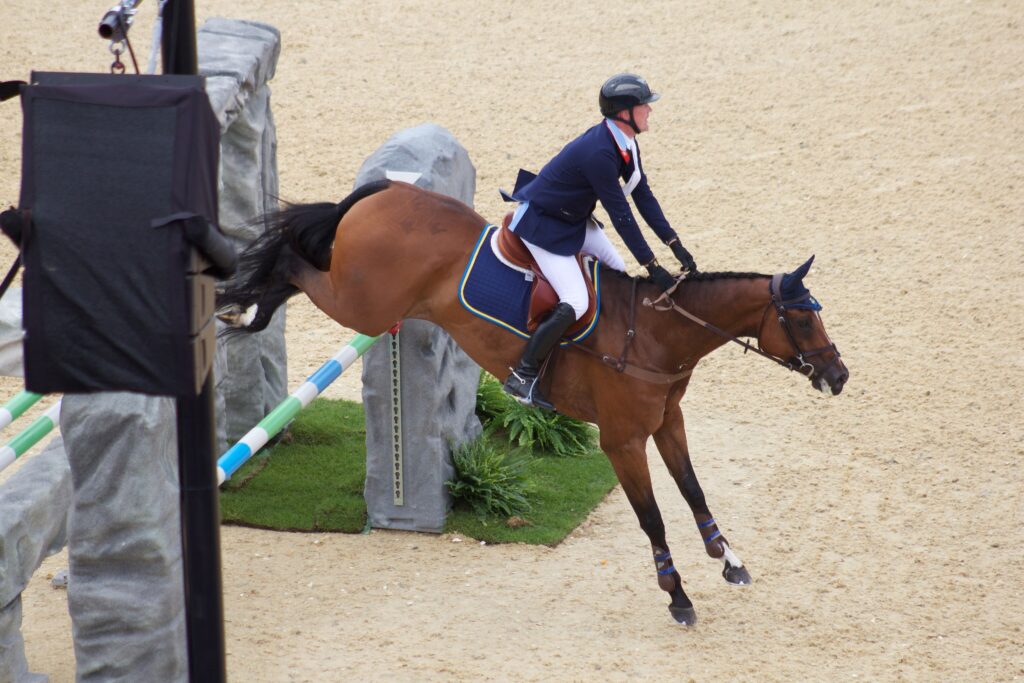The graceful partnership between humans and horses has been showcased on the Olympic stage for over a century, creating some of the most elegant and demanding competitions in the Games. While equestrian events might not always capture mainstream attention like swimming or gymnastics, they represent one of the most unique aspects of Olympic competition—where human and animal perform as a unified team. The Olympic equestrian tradition spans thousands of years, evolving from ancient warfare techniques to today’s precise demonstrations of skill, communication, and athletic prowess. From the early chariot races of antiquity to the three modern disciplines of dressage, eventing, and jumping, horses have carried both riders and Olympic dreams across the sands of time. This enduring partnership continues to demonstrate the special bond between humans and these magnificent animals on the world’s greatest sporting stage.
Ancient Origins: Horses in the Olympic Games of Antiquity
![Euryleonis was a horse breeder from Sparta whose horse chariot won the two horse chariot races of the Ancient Olympic Games in 368 BC. She is sometimes referred to as a princess and wealthy woman.[1][2]](https://saddlesociety.com/wp-content/uploads/2025/05/AMI_-_Streitwagen-1024x768.jpg)
Horses first galloped into Olympic history during the ancient Games in Greece, with equestrian events introduced to the program in 680 BCE. The earliest Olympic horse competitions were chariot races, particularly the tethrippon (four-horse chariot race) and keles (mounted horse racing), reflecting the central role horses played in Greek warfare and aristocratic society. Unlike modern Olympics where athletes receive the medals, in ancient times, it was the horse owner rather than the rider or charioteer who received the victory crown of olive leaves. These events were among the most prestigious and dangerous competitions, with wealthy aristocrats and even kings from across the Hellenic world competing for glory and divine favor through their equine representatives.
The Revival: Horses Return to the Modern Olympics
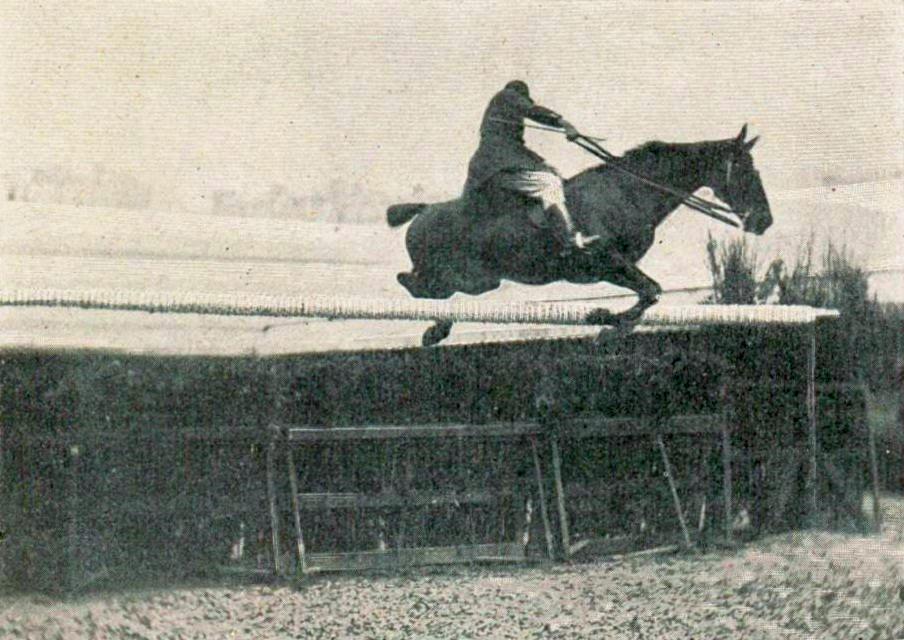
When Pierre de Coubertin revived the Olympic Games in 1896, equestrian events were not immediately included in the program. Horses made their modern Olympic debut at the 1900 Paris Games, featuring competitions in jumping, high jump, and long jump, though these were somewhat informal compared to today’s structured events. The 1912 Stockholm Olympics marked the true establishment of modern Olympic equestrian competition, introducing the three disciplines that would become the foundation of Olympic equestrian sports: dressage, eventing, and show jumping. This formal inclusion reflected the military origins of these equestrian disciplines, as cavalry officers from different nations demonstrated their horses’ training and abilities in competitions designed to showcase military horsemanship skills.
Military Connections: The Cavalry Tradition
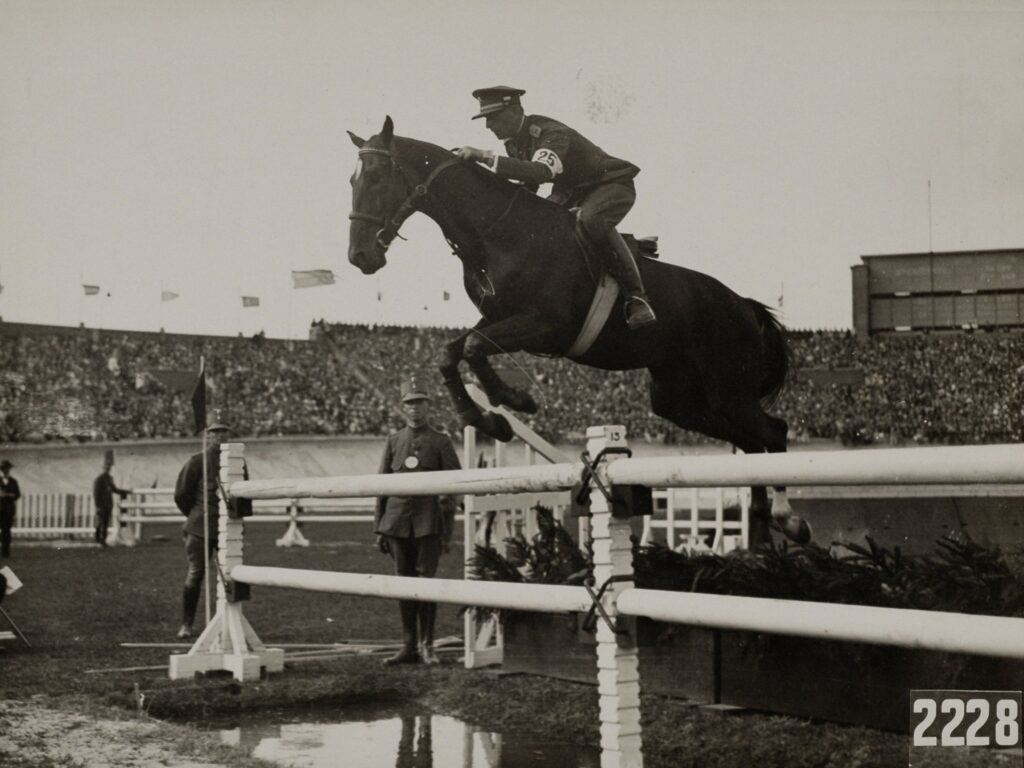
The early decades of modern Olympic equestrian competition were dominated by military officers, with civilian riders largely excluded until after World War II. This military connection was logical, as the three Olympic disciplines directly reflected skills needed by cavalry officers: dressage demonstrated precise control, jumping showed a horse’s agility over obstacles on the battlefield, and eventing tested the all-around capabilities needed for military messenger and reconnaissance work. Until 1952, Olympic equestrian competition was restricted to military officers and gentlemen riders, reflecting class distinctions that once defined the sport. The military influence remains visible today in the formal attire of riders, the precision required in performance, and terminology used throughout the competitions.
Breaking Barriers: Women Enter Equestrian Olympic Competition
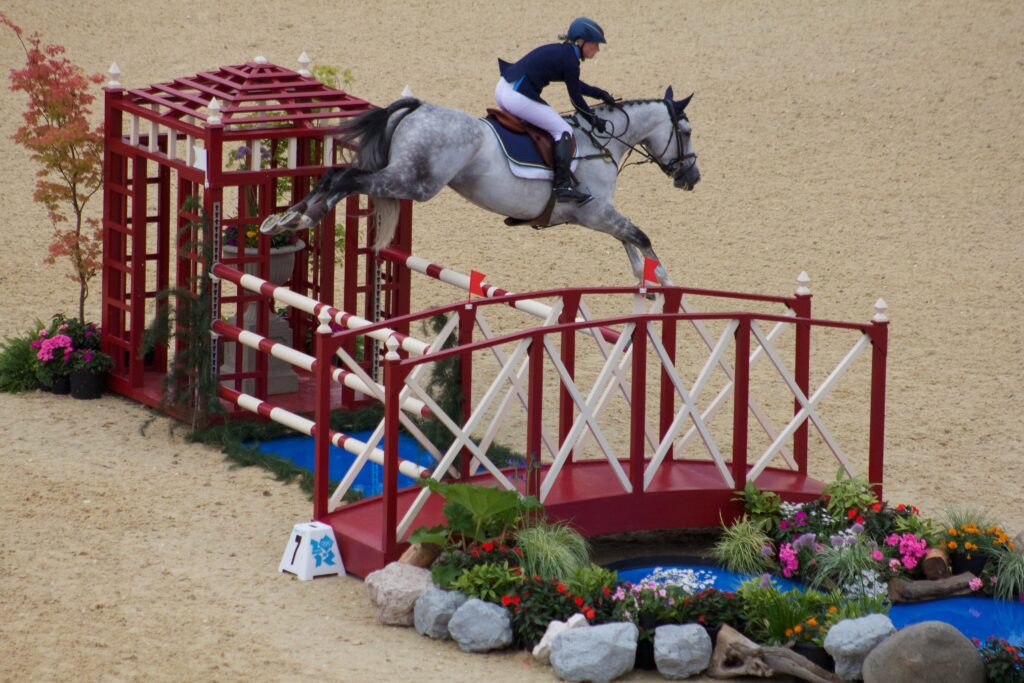
Equestrian sports hold the distinction of being the only Olympic events where men and women compete directly against each other on equal terms. This gender equity, however, was hard-won, with women first permitted to compete in Olympic equestrian events at the 1952 Helsinki Games. Danish equestrienne Lis Hartel made history as one of the first female Olympic medalists in equestrian sports, winning silver in dressage despite being partially paralyzed from polio – she had to be helped on and off her horse. The inclusion of women transformed the sport, bringing new perspectives and approaches to horsemanship that had previously been dominated by military tradition. Today, female riders frequently outnumber men in Olympic equestrian competitions, particularly in dressage, where women have come to dominate the medal standings.
The Art of Dressage: Ballet on Horseback
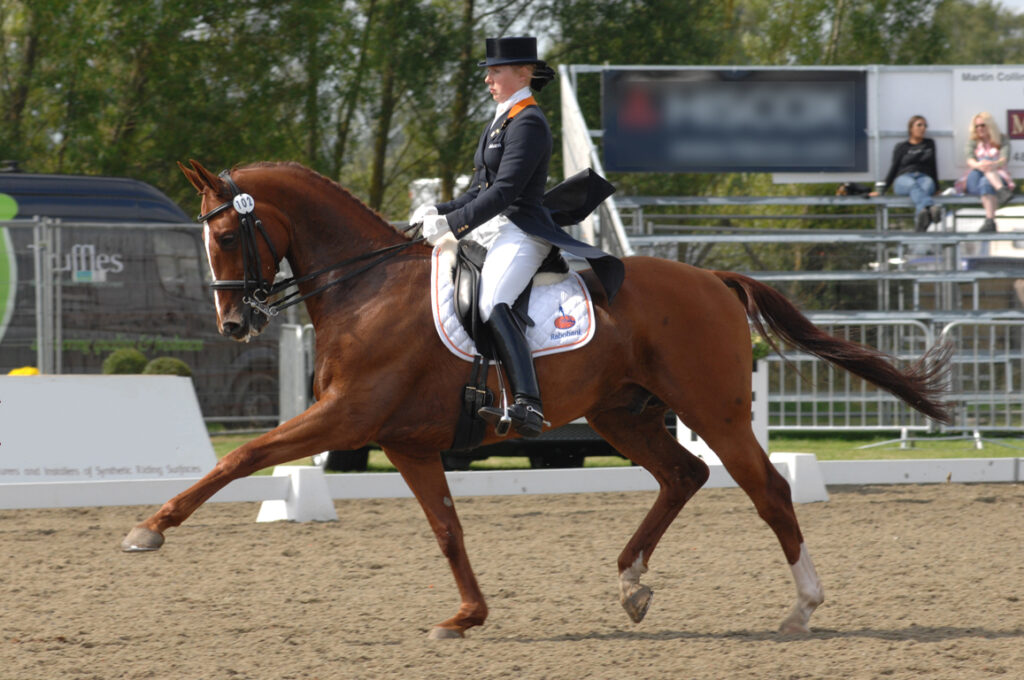
Dressage, often described as “horse ballet,” represents the highest form of horse training and has been an Olympic discipline since 1912. This elegant sport evolved from cavalry movements and battle maneuvers, transforming utilitarian skills into an artistic display of harmony between horse and rider. In Olympic dressage, competitors perform a series of predetermined movements called a “test,” with judges evaluating the horse’s obedience, flexibility, and balance alongside the invisible communication between horse and rider. The Grand Prix Freestyle, added to the Olympic program in 1996, allows riders to choreograph movements to music, creating routines that showcase their horse’s strengths. Legendary horses like Totilas, Valegro, and Isabell Werth’s multiple champion mounts have helped elevate dressage’s profile, demonstrating movements so precise they seem to defy the natural limitations of equine physiology.
The Challenge of Eventing: The Equestrian Triathlon
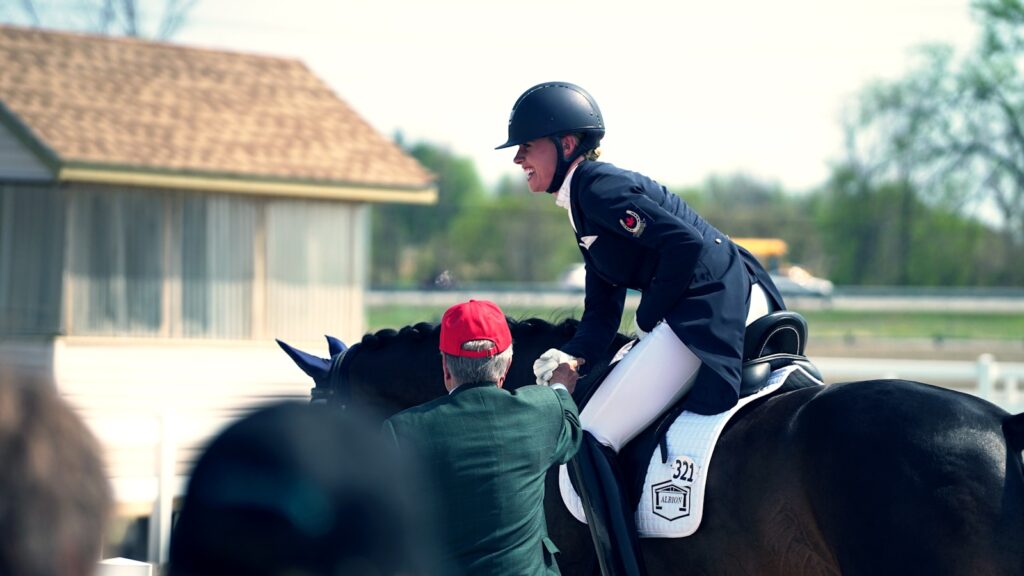
Eventing demands the most versatile Olympic equine athletes, requiring excellence across three distinct disciplines over multiple days of competition. Originally called “The Military,” this Olympic discipline began as a comprehensive test for cavalry horses, combining dressage precision, cross-country endurance, and stadium jumping agility. The cross-country phase presents the most dramatic challenge, with horse and rider navigating natural terrain and imposing obstacles at high speeds, testing courage as much as technique. Olympic eventing has evolved significantly for safety reasons, with changes to course design and competition format following accidents that highlighted the extreme risks inherent in the sport. Despite these modifications, eventing remains the ultimate test of all-around horsemanship and the closest Olympic discipline to the military origins of equestrian competition.
Show Jumping: The Crowd-Pleasing Spectacle
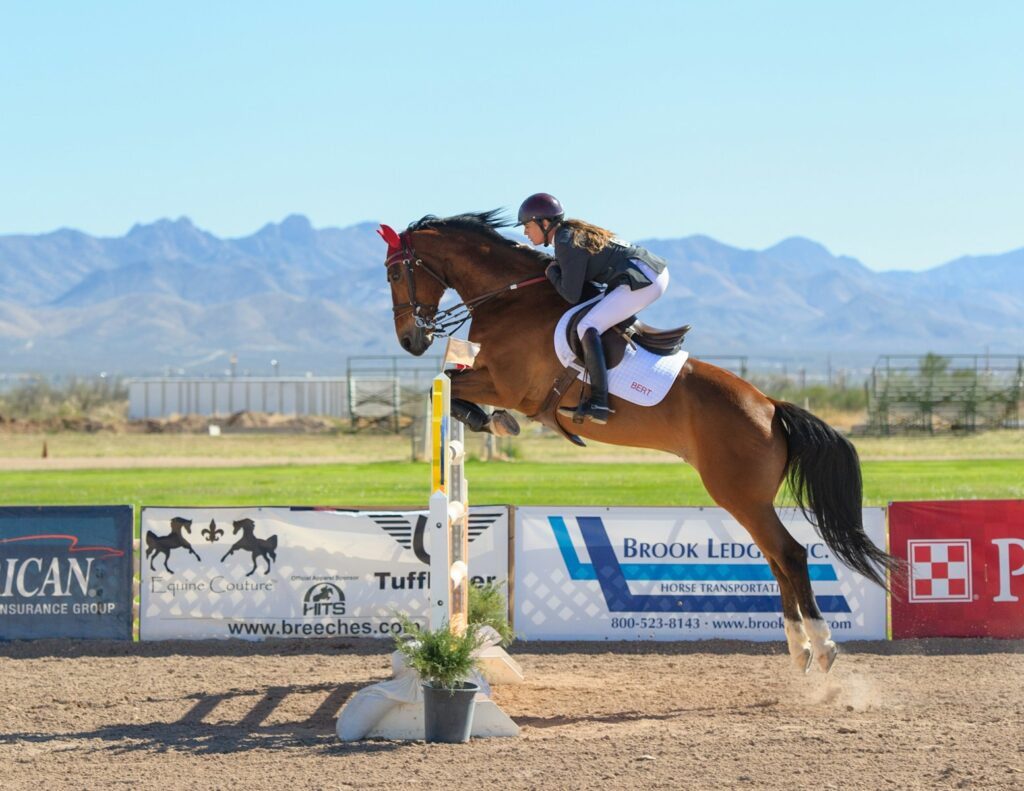
Show jumping has become the most accessible and popular Olympic equestrian discipline, combining straightforward objectives with heart-stopping suspense. The task seems simple—navigate a course of colorful obstacles without knocking down rails or exceeding the time allowed—but achieving a clear round requires extraordinary communication between horse and rider. Olympic show jumping courses have grown increasingly technical, with course designers creating intricate paths that test precision, adjustability, and split-second decision-making. The sport has produced some of equestrian’s biggest stars, from the legendary Milton ridden by John Whitaker to Nick Skelton’s Big Star, who helped his rider win individual gold at age 58 after recovering from a broken neck. The jump-off rounds, where tied competitors race against the clock over shortened courses, deliver some of the most exciting moments in Olympic equestrian competition.
Olympic Champions: Legendary Horses and Riders
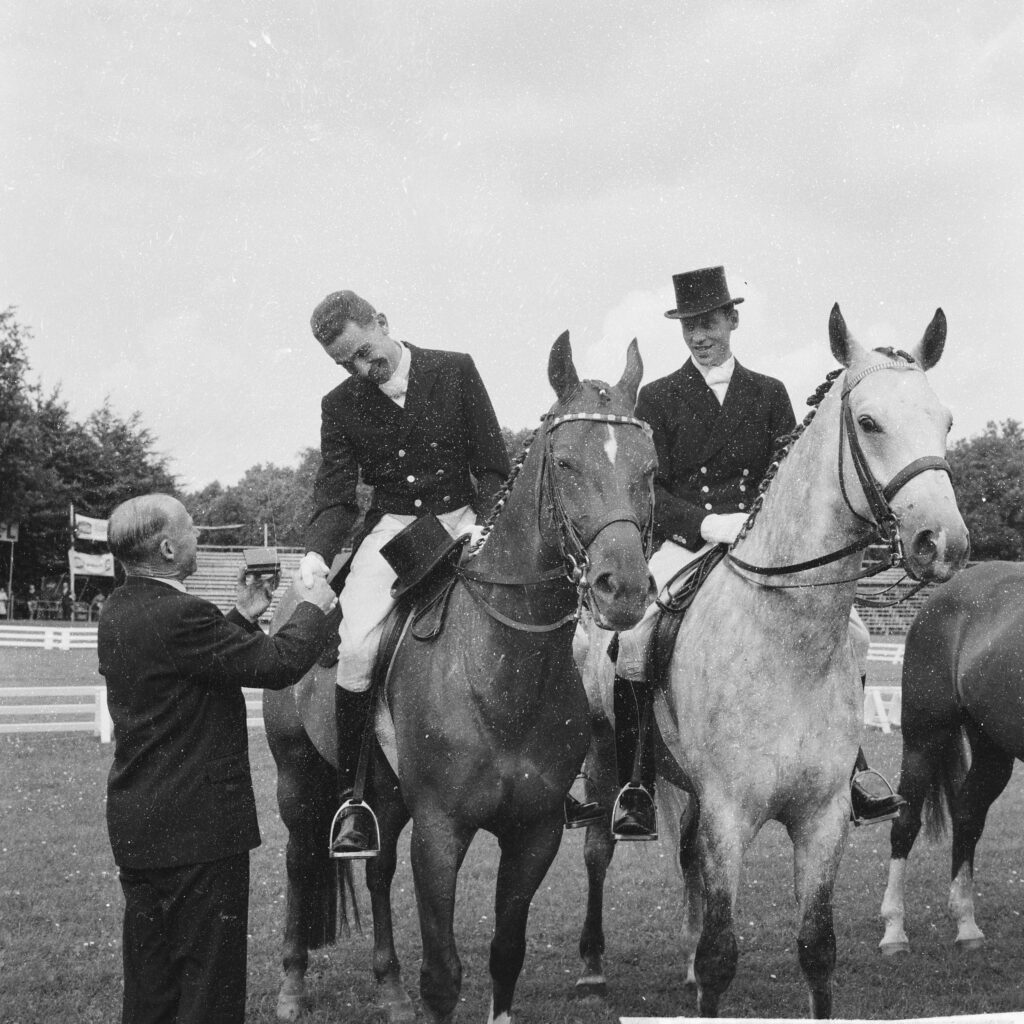
The annals of Olympic equestrian history are filled with remarkable partnerships between horses and humans that have captivated audiences and set new standards of excellence. Perhaps none is more legendary than Reiner Klimke and his mount Ahlerich, whose dressage performances earned multiple Olympic medals and helped define modern classical riding. In jumping, Canadian Ian Millar’s remarkable mount Big Ben helped him compete in a record-breaking ten Olympic Games throughout his career. The most decorated Olympic equestrian of all time, Isabell Werth of Germany, has amassed ten Olympic medals working with different horses, each partnership showcasing her exceptional ability to develop horses to the highest levels. These legendary combinations demonstrate that Olympic equestrian success requires more than individual brilliance—it demands a genuine partnership built on trust, communication, and countless hours of dedicated training.
Logistical Challenges: Moving Horses Across Continents
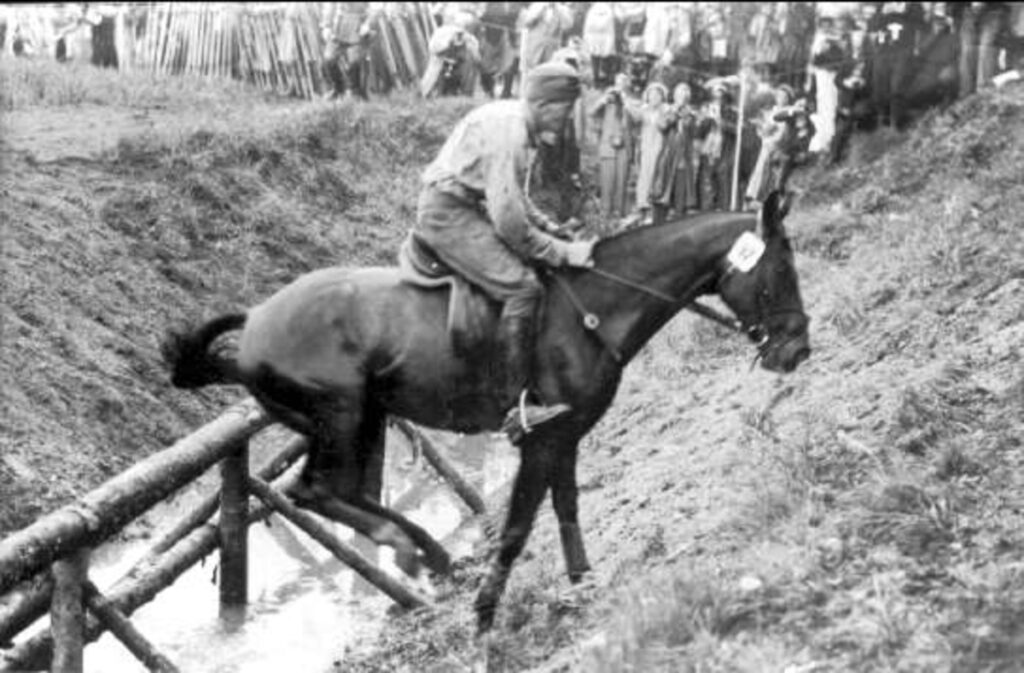
The inclusion of horses in the Olympic Games presents unique logistical challenges unlike any other Olympic sport. Transporting hundreds of valuable competition horses across continents requires specialized aircraft, stringent biosecurity protocols, and careful planning to minimize stress on the animals. Host nations must construct state-of-the-art equestrian venues with specific footing requirements, stabling for hundreds of horses, and facilities for veterinary care that meet the highest international standards. Strict quarantine regulations mean horses often arrive weeks before competition, requiring extended accommodation and care arrangements. During the 1956 Melbourne Olympics, Australia’s quarantine laws were so strict that all equestrian events had to be held separately in Stockholm, Sweden, creating the only instance of an Olympics split between two continents.
Welfare Concerns: Evolving Standards of Care
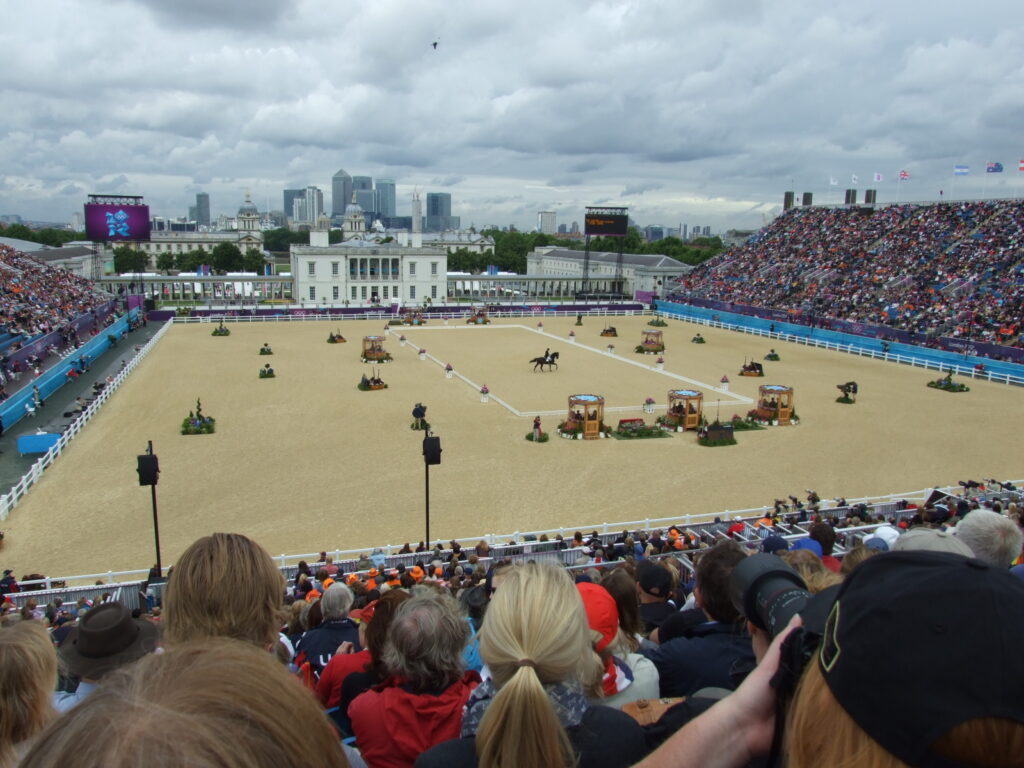
Horse welfare has become increasingly central to Olympic equestrian sport, with significant rule changes implemented to protect equine athletes. The Fédération Equestre Internationale (FEI) has introduced strict regulations regarding the use of whips, spurs, and training methods, along with comprehensive anti-doping programs to ensure fair and humane competition. Developments in sports science have led to advancements in equine nutrition, fitness programs, and injury prevention, with Olympic horses receiving care comparable to that of human athletes. Veterinary inspections form a critical part of Olympic competition, with horses examined before and during events to ensure they are fit to compete, regardless of their standing in the competition. The evolution of standards reflects changing societal attitudes toward animal welfare and recognition that Olympic equestrian success should never come at the expense of the horse’s wellbeing.
Global Expansion: From European Dominance to Worldwide Participation
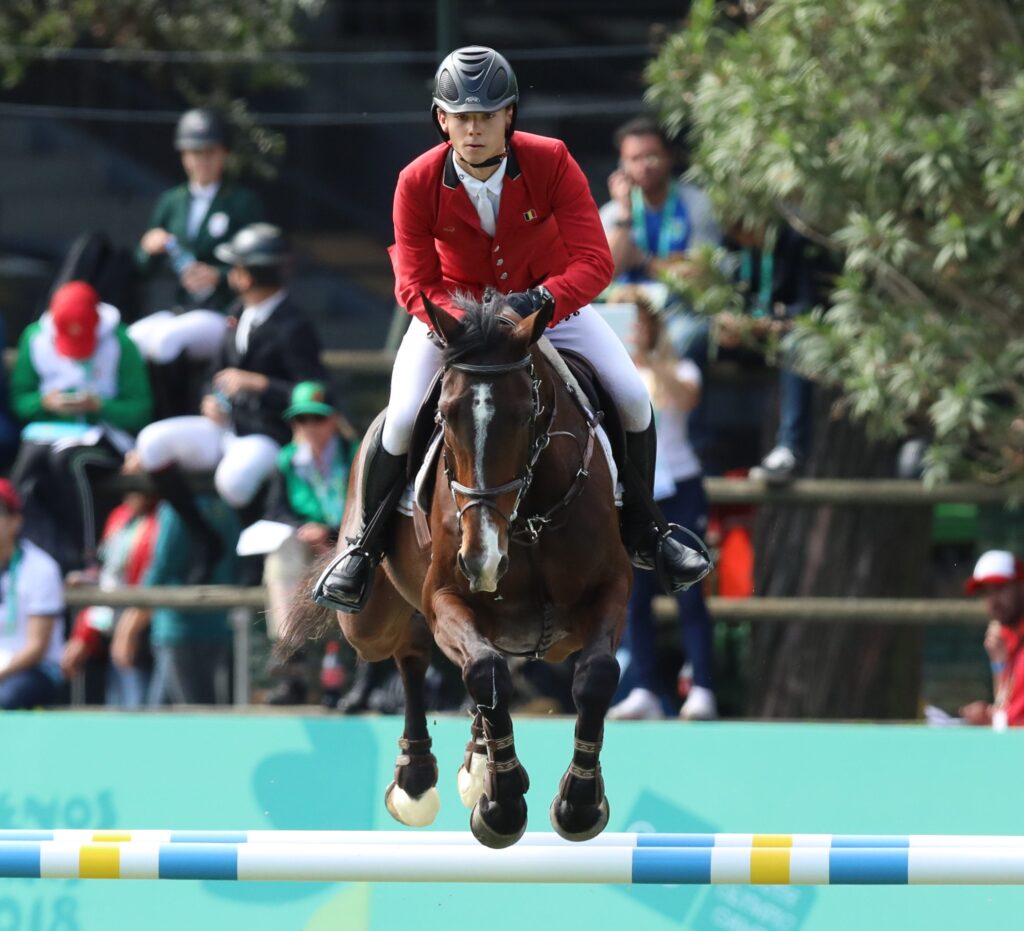
While Olympic equestrian sports were once dominated by traditional European powers like Germany, France, and Sweden, recent decades have seen remarkable global expansion. Nations like Japan, Saudi Arabia, and Brazil have invested heavily in equestrian programs, challenging the historical European supremacy. The 2008 Beijing Olympics marked a watershed moment when Canada’s Eric Lamaze won individual jumping gold, and the Hong Kong venue demonstrated Asia’s growing equestrian infrastructure and expertise. Individual riders from diverse nations have broken through to Olympic success, including Hiroshi Hoketsu of Japan, who competed in dressage at age 71, becoming one of the oldest Olympians in history. This globalization has enriched Olympic equestrian competition, bringing different approaches to horsemanship while raising the overall standard of competition across all three disciplines.
Modern Innovations: Technology’s Impact on Equestrian Sport
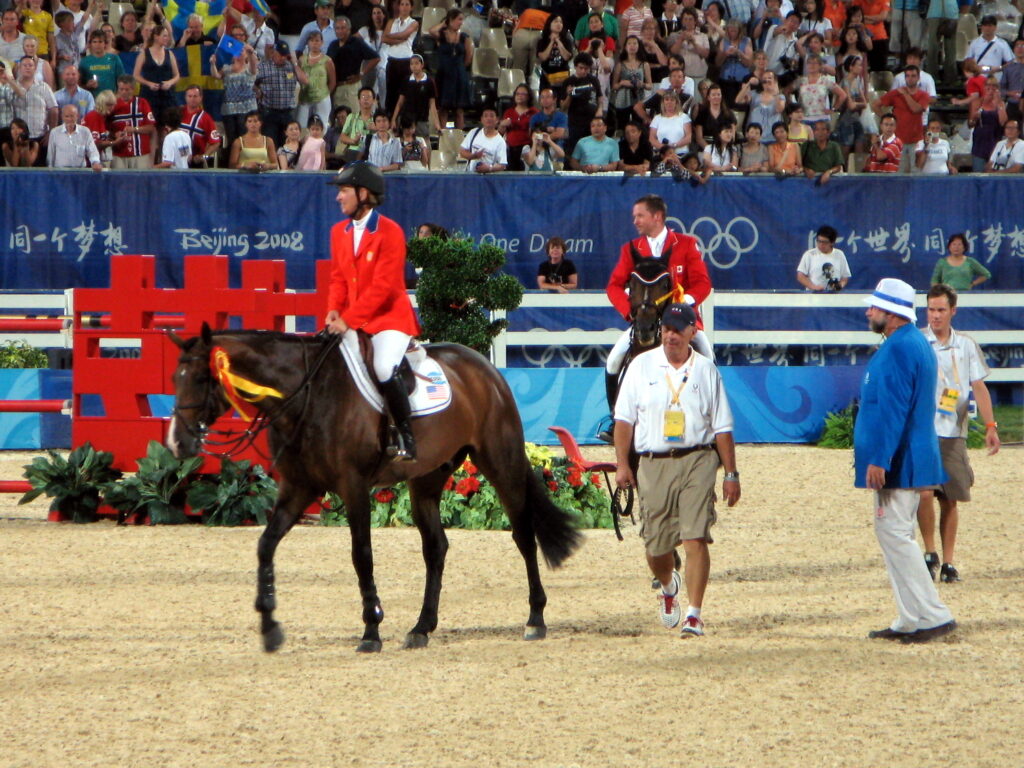
Technological advancements have transformed Olympic equestrian competition, with innovations affecting everything from equipment to judging. High-tech footing materials now provide optimal surfaces that maximize performance while minimizing injury risk, a far cry from the basic turf fields of early competitions. Advancements in saddle design, protective equipment, and even riding apparel have enhanced both safety and performance capabilities for horse and rider combinations. Digital scoring systems provide instant feedback to competitors and audiences, making the complex judging of dressage more transparent and accessible. Slow-motion replay technology has revolutionized judging in all disciplines, allowing officials to make more accurate decisions regarding time penalties, jumping faults, and dressage movements. These innovations continue to evolve, balancing respect for traditional horsemanship with the benefits of modern technology.
The Future of Olympic Equestrian Competition
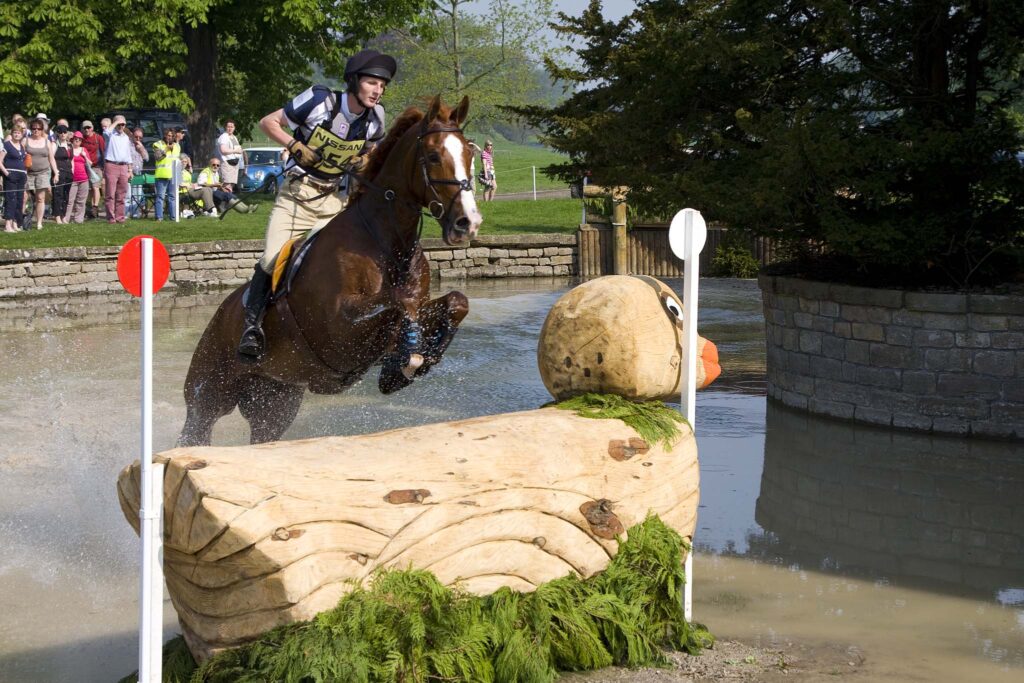
As the Olympic Games continue to evolve, equestrian sports face both challenges and opportunities in maintaining their place in the program. Format changes, including shorter competitions and more spectator-friendly presentations, aim to increase the sport’s appeal to broader audiences and address IOC concerns about complexity and accessibility. Efforts to diversify participation beyond traditional equestrian nations continue, with development programs supporting emerging equestrian countries. Environmental considerations are reshaping facility design and competition planning, with sustainability becoming a priority in how Olympic equestrian venues are constructed and operated. Despite these changes, the fundamental partnership between horse and rider remains at the heart of Olympic equestrian sport, preserving the unique appeal of the only Olympic events where humans compete alongside animal partners.
The Olympic equestrian tradition represents one of the most enduring connections between the ancient and modern Games, preserving the timeless partnership between humans and horses on the world’s greatest sporting stage. From military origins to today’s specialized athletic competitions, the evolution of equestrian events reflects changing societal relationships with horses while maintaining the core values of harmony, communication, and mutual respect between species. As the only Olympic discipline where men and women compete as equals and where the welfare of an animal partner must be considered alongside competitive goals, equestrian sports offer unique perspectives on athletic excellence. While the specifics of competition continue to evolve, the fundamental beauty of the partnership between horse and rider remains a testament to what can be achieved when humans work in harmony with these magnificent animals, creating Olympic moments that celebrate not individual achievement alone, but the special bond between two different species working as one.

